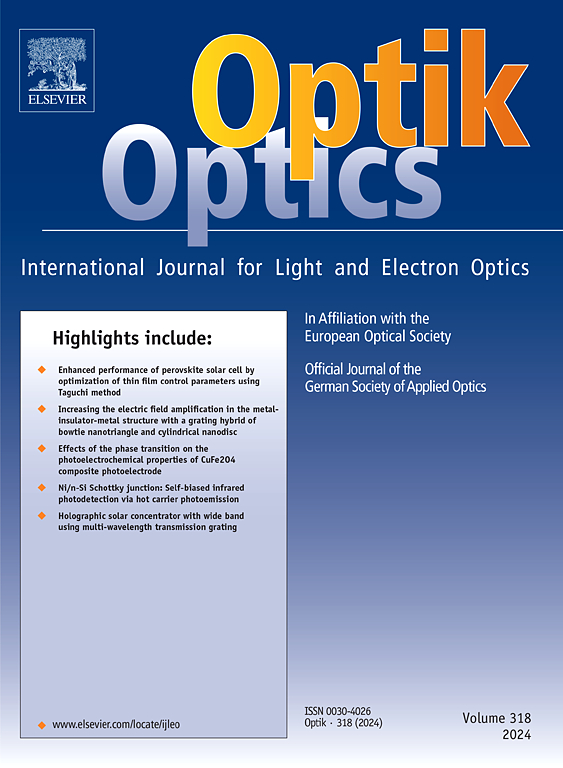共轭模干涉产生的可调矢量涡的全局参数分析
IF 3.1
3区 物理与天体物理
Q2 Engineering
引用次数: 0
摘要
我们展示了一种产生和连续调谐光矢量涡旋光束空间偏振的方法。利用共轭模干涉仪实现了拓扑电荷相反、圆偏振正交的两束光涡旋光束的相干组合,产生了光矢量涡旋光束。在干涉仪的一个臂上使用阶跃中性密度滤波器来控制干涉光束的相位和强度,从而影响合成光束的空间偏振分布。实验中通过倾斜中性密度滤光片产生对称和不对称空间偏振分布的光束。此外,还讨论了表征矢量涡旋光束矢量特性的一组全局参数,并发现实验结果与模拟结果吻合较好。实验产生的光束具有超过90 %的模式纯度。该方法是实现矢量涡旋空间极化的小角度传感、快速切换和连续调谐的有效工具。本文章由计算机程序翻译,如有差异,请以英文原文为准。
Analyzing global parameters of tunable vector vortices generated via conjugate mode interference
We have demonstrated a method to generate and continuously tune the spatial polarization of optical vector vortex beams. The coherent combination of two optical vortex beams with opposite topological charge and orthogonal circular polarization is achieved using a conjugate mode interferometer to generate optical vector vortex beams. A step neutral density filter is used in one of the arms of the interferometer for controlling the phase and intensity of one of the interfering beams which thereby affects the spatial polarization distribution of the resultant beam. Beams with symmetrical and asymmetrical spatial polarization distribution are generated experimentally by tilting the neutral density filter. Additionally, a set of global parameters that characterize the vector nature of vector vortex beams are discussed and found that the experimental results are in good agreement with the simulated results. The experimentally generated beams are found to have more than 90 % mode purity. This method is a useful tool for small angle sensing, fast switching and continuous tuning of the spatial polarization of vector vortices.
求助全文
通过发布文献求助,成功后即可免费获取论文全文。
去求助
来源期刊

Optik
物理-光学
CiteScore
6.90
自引率
12.90%
发文量
1471
审稿时长
46 days
期刊介绍:
Optik publishes articles on all subjects related to light and electron optics and offers a survey on the state of research and technical development within the following fields:
Optics:
-Optics design, geometrical and beam optics, wave optics-
Optical and micro-optical components, diffractive optics, devices and systems-
Photoelectric and optoelectronic devices-
Optical properties of materials, nonlinear optics, wave propagation and transmission in homogeneous and inhomogeneous materials-
Information optics, image formation and processing, holographic techniques, microscopes and spectrometer techniques, and image analysis-
Optical testing and measuring techniques-
Optical communication and computing-
Physiological optics-
As well as other related topics.
 求助内容:
求助内容: 应助结果提醒方式:
应助结果提醒方式:


